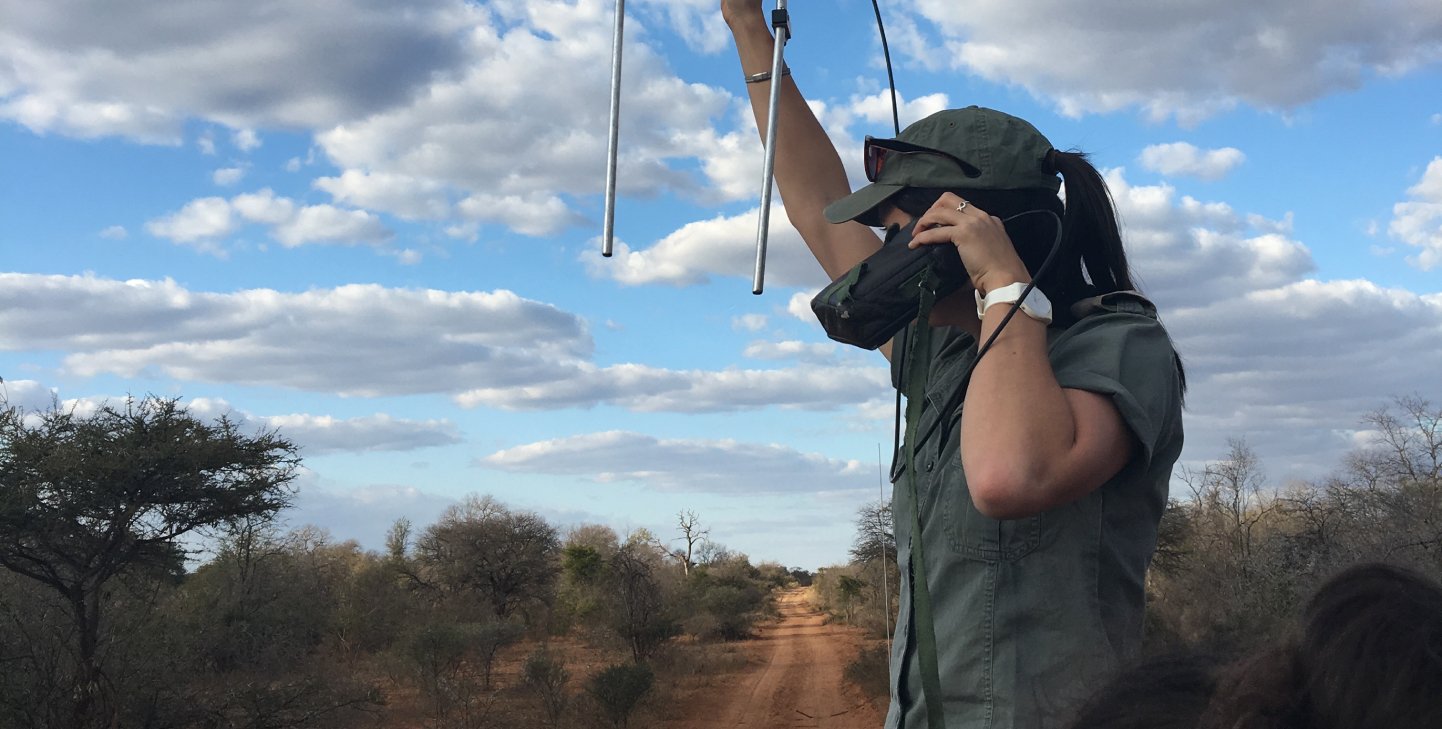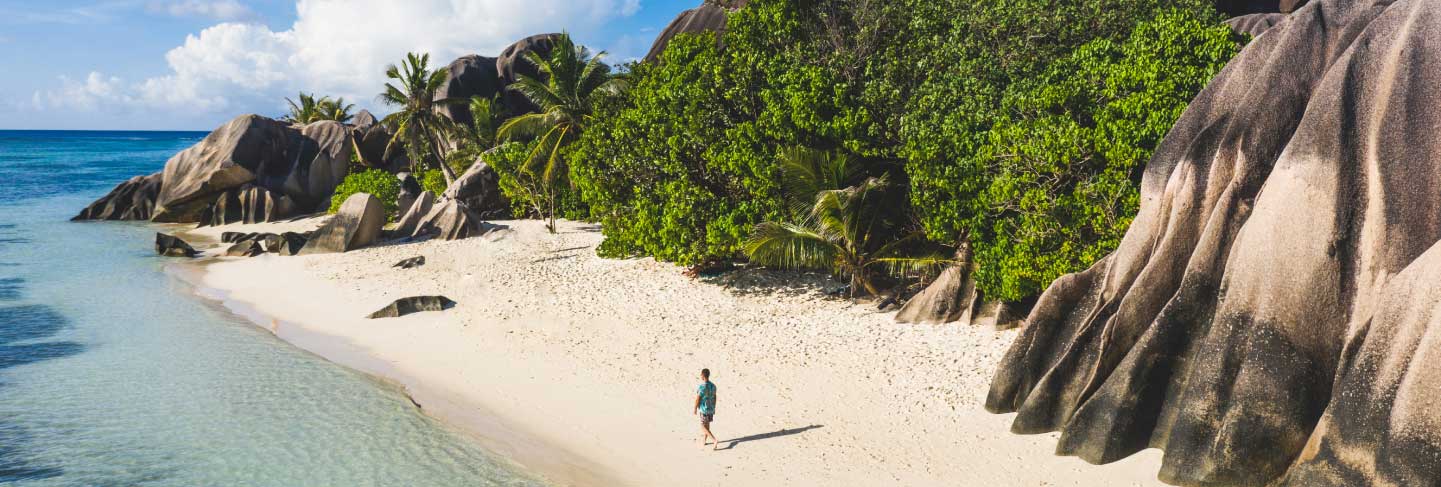Habitat & Ecosystem Internship Programs
Work to ensure healthy habitats around the world.
Living and working in some of the most extraordinary and vulnerable habitats, interns contribute towards protecting our planet’s habitats and ecosystems. Working on real-life projects in collaboration with on-the-ground partners, you’ll collect data on species, ecosystems and habitats, which is uploaded to global datasets through citizen science platforms like eBird and iNaturalist.
What are habitats and ecosystems?
A habitat is the natural environment where a plant or animal typically lives and flourishes. Meanwhile, an ecosystem comprises a specific geographic area where a variety of organisms, as well as weather patterns and the landscape, interact and coexist to create an environment that sustains life. There are several important ecosystems on Earth, such as coral reefs, mangroves, seagrass beds, grasslands/savannahs and forest ecosystems. Each of these ecosystems provides diverse habitats that serve as homes for many different types of plants and animals to thrive.
Why should we care about protecting habitats and ecosystems?
The well-being of human societies depends on the health of habitats and ecosystems, which provide crucial ecosystem services – such as clean water, fresh air, soil preservation, climate control, nutrient cycling and food cultivation. These habitats and ecosystems also act as sources of raw materials and resources for different medicines, and other purposes.
Quick shifts in climate can severely affect forests, oceans, fish populations and nearby societies. Unless we reduce carbon emissions, there could be a decline of up to 25% in species diversity by the end of this century, caused by diminished stocks and productivity, which would have an impact on all living things, from small organisms to humans.
Monitor habitats and ecosystems using scientific methods
Habitats and ecosystems are easily stressed by human activities, climate change, sediment, nutrients, contaminants and many other variables. Habitat and ecosystem monitoring is a way to check the condition (health) by collecting data on certain variables or parameters that are important for the functioning and maintenance of habitats. The data gathered can inform conservation management decisions and can assist with understanding the effectiveness of various ecosystem services.
How will you contribute to the conservation of habitats and ecosystems?
As an intern on a habitat and ecosystem program, you’ll contribute to sustainable conservation projects while gaining career-boosting skills and real-world experience. On an internship program you’ll work on various activities including beach cleanups, education and awareness campaigns about the loss of biodiversity, and support the activities of our partner organisations involved in conservation (which indirectly benefits habitats and ecosystems). In collaboration with our partners on the ground, you’ll have the opportunity to contribute towards developing sustainable fishing practices, advocate for reduced coral reef destruction and support efforts to monitor coastal development in the oceans. You’ll also work towards promoting responsible agricultural practices, reducing pollution and plastic waste, conserving forests and their biodiversity, reducing deforestation and promoting sustainable urban development. We follow sustainable living practices at our hubs and by having reflection sessions, talks and interactive activities, we encourage our participants to care about the surrounding habitats and ecosystems.
GVI’s conservation hubs are located in some of the most extraordinary and vulnerable habitats on Earth, in regions which are also well-known biodiversity hotspots. We work towards protecting habitats and ecosystems by monitoring their status and by working with stakeholders and management authorities to inform their conservation decisions. We follow the seventeen United Nations Sustainable Development Goals and collect data on plants, insects, birds, mammals, fish and reptiles using existing citizen science platforms such as eBird and iNaturalist. This data becomes part of global datasets about particular regions, and helps researchers in understanding and conserving species, ecosystems and habitats.
What activities are conducted on GVI’s habitat and ecosystem programs?
- Monitoring of coral reef ecosystems using photogrammetry
- Reef resilience surveys
- Reef fish counts
- Monitoring of sea turtle habitats and nesting beaches
- Bird counts
- Monitoring of forest ecosystems
- Monitoring and conservation of mangrove ecosystems
- Monitoring blue carbon in seagrass ecosystems
- Focus species monitoring
- Bio-surveys of invertebrates and birds
- Reserve management or other activities that support conservation management
- Community environment education
- Camera trapping
- Herbivore and predator monitoring and management
- Radio telemetry monitoring
What are different ways to protect habitats and ecosystems?
Everything we do adds to the actions of all the other people living in a region. When a small action is multiplied daily by millions of people, it can become harmful to the plants and animals living in a particular area. The effective way to protect habitats and ecosystems is to adopt sustainable living practices, get involved in conservation activities, and support organisations involved in protecting habitats.
What kind of internship tasks will be performed by participants specialising in this focus?
- Planning and designing surveys
- Ecosystem and habitat impact assessments
- Leading forest walks for monitoring trees and associated birds, mammals and invertebrates
- Data collection, organisation and analysis
- Data interpretation and writing
Which UN SDGs will volunteers be contributing towards?
- UN SDG 13: Climate Action
- UN SDG 14: Life Below Water
- UN SDG 15: Life on Land
- UN SDG 17: Partnerships for the Goals
Which partners will you be working with?
GVI participants work with government institutions and NGOs, and support activities of partner institutes. Below are just a few examples for each ecosystem.
- In Seychelles we have partnered with the Seychelles Parks and Gardens Authority (SPGA). Our work here focuses on conducting benthic assessments and monitoring the functionally of important coral reef species.
- On the island of Tenerife in the Canary Islands we work with RedPROMAR. With a focus on coastal ecosystems, here we assist with gathering data on cetaceans (dolphins and whales).
- Our partner in Madagascar is Ampasipophy Lokobe, a locally-managed protected conservation area. In this forest region, we assist with involving community members in the conservation of forests, plants and associated life.
- In Costa Rica, we work with Parque Nacional Cahuita. Focusing on forest ecosystems, we assist with making checklists of forest species and associated life, plant phenology studies, and documenting forest associated biodiversity.
- Our partner in South Africa is Karongwe Private Reserve. Working In this savannah ecosystem, our program focuses on monitoring shrubs and the savannah landscape.
Filter programs
What are the different categories of habitats and ecosystems?
Coral reefs and seagrasses
Coral reefs are built from skeletons of hard coral and other organisms. They are made up of massive deposits of calcium carbonate (limestone) and are a living layer which is constantly evolving. Reefs protect coastlines from storms and erosion, are home to thousands of other species and provide livelihoods for local communities.
Seagrasses are the only flowering plants which grow in marine environments. There are about 60 species of fully marine seagrasses which belong to four families. Seagrass plays an important role in absorbing carbon dioxide from the environment and provides an important habitat for fish and other invertebrate species to thrive. The main threats to these ecosystems are climate change, land runoffs, overfishing and tourism. GVI is creating a database that will assist with assessing the health of reefs in Seychelles, Fiji and the Mexican Caribbean.
We run programs with a focus on coral reefs and seagrasses in Mexico, Seychelles, Fiji and Thailand.
Coastal
Coastal ecosystems are the unique habitats formed by plants and other organisms that can thrive at the borders between ocean and land, where they live in saltwater and changing tides. Like forests, many of these coastal ecosystems are full of plants that help regulate Earth’s temperature. The main threats to coastal ecosystems are urban development, overfishing, tourism, pollution and plastic. GVI is working with local communities to monitor the biodiversity and overall health of coastal ecosystems, as well as reducing plastic pollution through periodic beach cleanups.
We run programs with a coastal focus in Fiji, Thailand (Phang Nga), Seychelles and Tenerife (the Canary Islands).
Forests and jungles
Forests and jungles are home to more than half of all species found on land, a rich variety of life that keeps many of our most vital natural systems running – from keeping our climate stable by absorbing carbon dioxide and releasing oxygen, to regulating our water supply and improving its quality. The main threats to these ecosystems are logging, agriculture and farming, urban development, climate change (wildfires/droughts) and habitat destruction due to deforestation and development activities.
GVI is generating a baseline database and species checklist of forest-associated biodiversity (herpetofauna, mammals and bird surveys). We also assist with local wildlife conservation efforts through providing practical support to project partners, data collection, awareness raising and habitat restoration.
We run programs with a focus on forests and jungles in Costa Rica (rainforest), Thailand (deciduous forest) and Madagascar (rainforest).
Savannahs and grasslands
Grasslands and savannahs represent some of the world’s richest and most diverse ecosystems. They also provide a home for a quarter of the world’s population and a habitat for thousands of highly-specialised plants and animals. The coexistence between wildlife and grasses is key to healthy ecosystems. Logging, development, conversion to agriculture, overgrazing by livestock, and the presence of non-native plant species are the main threats to savannahs. Poaching or hunting, overgrazing, and destruction of land are the main threats to commercial crops. Many animals in the savannah are endangered and threatened with extinction due to hunting, poaching and habitat loss.
GVI is creating a database that will help to assess the health of grasslands and its associated life. We also work on assessing habitat use of grassland-associated species.
We run a program with a focus on savannahs and grasslands in South Africa.
Habitat and ecosystem internships in Mexico
In the town of Puerto Morelos in Mexico, our habitat and ecosystem internships focus on coral reefs and seagrasses. The Mesoamerican Reef System contains the largest barrier reef in the Western Hemisphere, stretching nearly 1,200 kilometres. The Yucatan Peninsula of Mexico is known for its beautiful underwater caverns, known as cenotes. The main threats in this region are over-sedimentation, pollution, overfishing, habitat destruction, coastal development and coral disease.
On an internship program in Mexico you could assist with the following activities:
- Collecting long-term data on corals, reef fish and benthic categories.
- Assessing the presence of coral diseases.
- Monitoring the biomass and biodiversity of reef fish species.
- Documenting the presence of megafauna and creating baseline data on the distribution and abundance of species.
- Assessing the queen conch population.
- Assessment of shark fisheries.
- Conducting research on commercial fisheries.
- Assessing lobster populations.
Habitat and ecosystem internships in Seychelles
On the island of Mahe in Seychelles GVI works on conservation programs with a focus on coral reefs and seagrasses. The Seychelles archipelago consists of 115 islands, of which 76 are coralline and the remaining granitic. Seychelles is known for its atolls – a ring-shaped coral reef, island, or series of islets – including Aldabra, the world’s second-largest coral atoll. The island of Mahe is home to a number of endemic species that have adapted to its particular environments, such as wet and dry forests, coastal regions and highlands. Endangered species like the Seychelles scops owl, paradise flycatcher, kestrel and sheath-tailed bat face risks due to habitat destruction and invasive species. It is crucial to safeguard the fragile ecosystems of the island to protect these species. The main threats in this region are over-sedimentation, pollution, overfishing, habitat destruction, coastal development and coral diseases.
On an internship program in Seychelles, participants can expect to take part in the following activities:
- Monitoring of coral reefs and benthic zones.
- Identification of fish and corals.
- Assessment of plastic using the Dive Against Debris (DAD) data collection method.
- Periodic beach cleanups and assessing the source of plastic pollution.
- Seagrass data collection (species composition and associate biodiversity)
- Image capturing and data collection of individual megafauna sightings.
- Data collection of nudibranch species.
- Coral bleaching data collection – as part of the citizen science project run by University of Queensland, Australia.
Habitat and ecosystem internships in Fiji
In the Dawasamu district in Fiji, our internship programs focus on coral reefs. In Fiji, coral reefs fall under the management of the Fiji Locally Managed Marine Area Network and follow a community-based conservation approach. The main threats to this ecosystem are over-sedimentation, pollution, overfishing, habitat destruction, coastal development and coral diseases.
When you join an internship in Fiji, you can expect to be involved in the following activities:
- Monitoring of coral reefs and benthic zones.
- Documenting corals, reef fish and invertebrates, and identification of species to create a long-term database.
- Identifying fish landings for identification of commercially important surveys.
- Monitoring the habitat use of flagship species (e.g. sharks, turtles and groupers).
- Work on education and awareness programs for conserving habitats and ecosystems.
- Complete the PADI Underwater Naturalist course (for identifying common marine species like corals, fish and invertebrates).
Habitat and ecosystem internships in Thailand
In Thailand, our internship programs focus on coral reefs, forests and coastal habitats in Phang Nga. Situated in Southern Thailand, Phang Nga is a province that shares its border with the Andaman Sea. One of the notable features of the province is the Ao Phang Nga National Park, which includes Phang Nga Bay with its towering limestone islets. The main threats in this region include overfishing, the current status of the reefs, coral bleaching, habitat destruction, logging and plastic pollution.
In Phang Nga, typical activities on a GVI internship include:
- Conducting coral reef and benthic surveys to assess the status of the reefs.
- Recording the health of the corals and the abundance of marine life.
- Periodic beach cleanups and assessing sources of plastic pollution.
- Reducing plastic pollution.
- Recording forest biodiversity.
- Conducting bird and butterfly surveys using citizen science platforms.
Habitat and ecosystem internships in Canary Islands, Spain
On the island of Tenerife in Spain’s Canary Islands, GVI’s habitat and ecosystem internship programs focus on coral reefs, coastal areas and the habitats of marine mammals.The archipelago of the Canary Islands, made up of seven major islands and six islets, is situated in the Atlantic Ocean and belongs to Spain. While the closest island is located 108 kilometres from the northwest African mainland, the maximum distance between islands within the archipelago is 485 kilometres. Although the Canary Islands are geographically a part of the African continent, they are considered European from a historical, economic, political and socio-cultural perspective. The main threats to habitats and ecosystems in this region are the impact of tourism on marine ecosystems, plastic pollution, erosion of beaches, coral bleaching and coral reef destruction due to impacts on climate change and human activities.
Typical activities on a GVI internship program in the Canary Islands include:
- Conducting beach profiling to determine annual changes to beach habitats.
- Participating in beach cleanups and assessing the source of plastic pollution.
- Assessing the habitat preference of marine mammals.
What is GVI doing to protect habitats and ecosystems?
Across GVI’s different hubs around the world, we are working towards conserving functional groups that are important for maintaining the health of habitat and ecosystems. We have also adopted a conservation policy across our hubs where we reduce, reuse and recycle our waste.
What specific habitats and ecosystems will I work with as part of my internship?
Depending on the program you choose, you’ll work towards monitoring coral reefs, forests, mangroves, savannahs/grasslands or seagrass ecosystems as part of your internship. For more information on each ecosystem and our relevant programs refer to the Habitat and Ecosystem tab.
What types of organisations offer future job opportunities?
Understanding and gaining experience in working with habitats and ecosystems provides a foundation for any future job. Because habitats and ecosystems are such a crucial part of conservation, developing your knowledge and skills sets you up for future roles. Examples of types of organisations you might want to explore include government organisations, NGOs, research institutes and universities.























